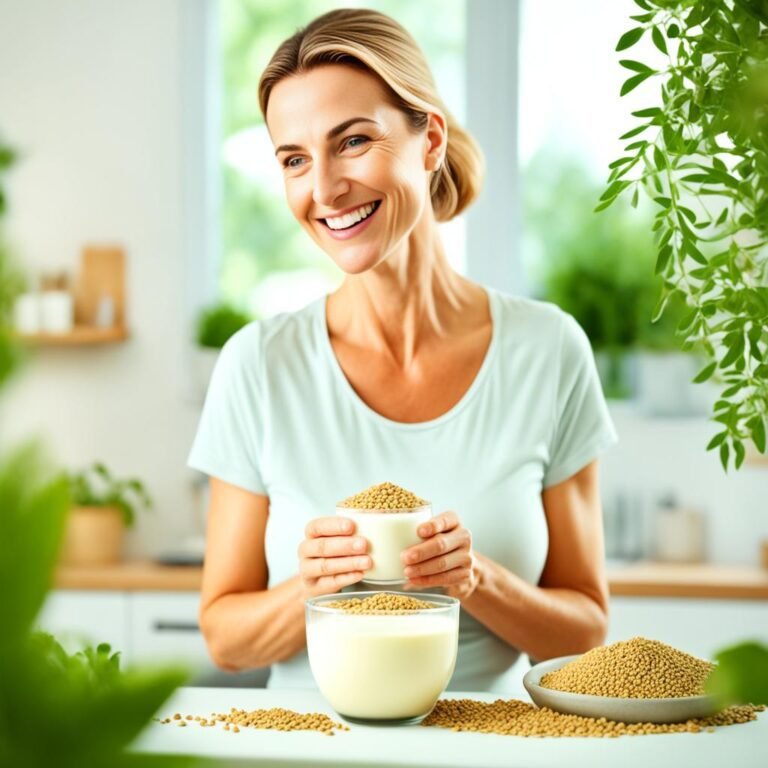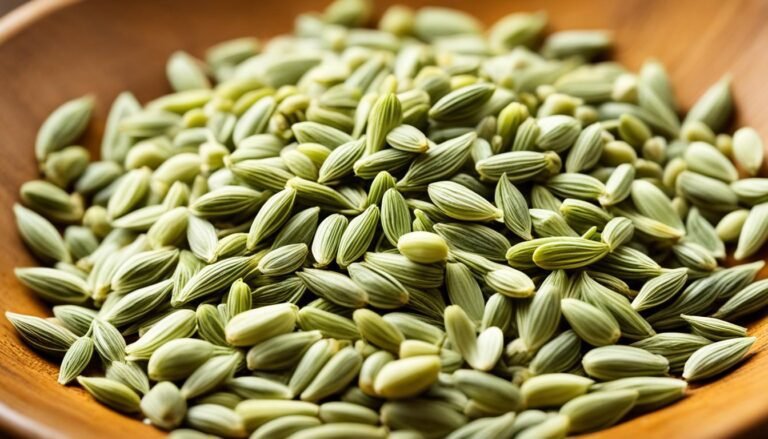Easy Growing Poppy Seeds: Beginner’s Guide
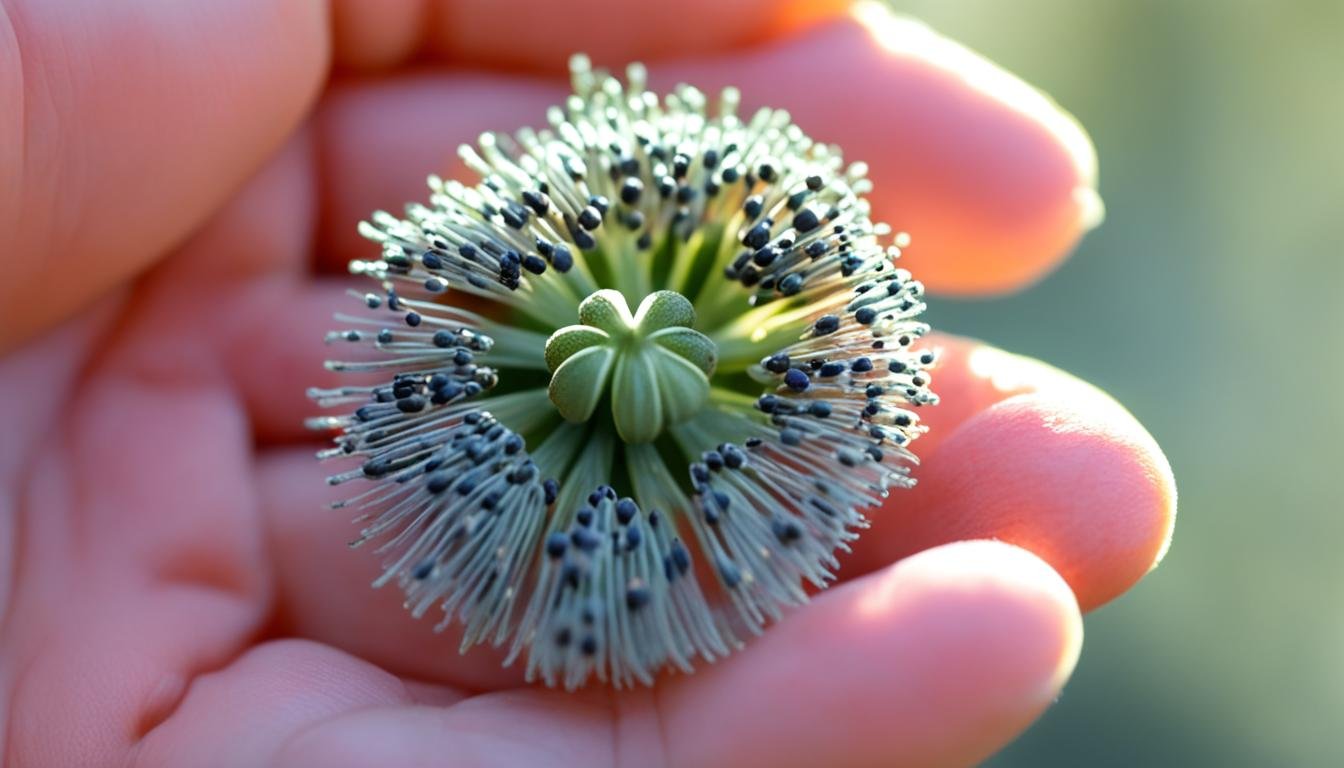
Did you know California poppies have been the state flower of California since 1903? This vibrant, orange bloom is just one of the many captivating varieties of poppies you can grow in your own garden. Whether you’re drawn to the delicate, papery petals of the Flanders poppy or the bold, ruffled blooms of the Oriental poppy, these flowers can transform any outdoor space into a verdant oasis.
In this comprehensive guide, you’ll discover the secrets to successfully growing poppy seeds and creating a stunning display of these iconic flowers. From selecting the right varieties to mastering the art of planting and care, you’ll be well on your way to cultivating a captivating poppy garden that will delight your senses and impress your neighbors.
Choosing the Right Poppy Variety
There are over 800 species of poppies in 42 genera, offering endless options for gardeners. Whether you prefer the brief beauty of annuals or the lasting beauty of perennials, there’s a poppy for you. Let’s look at some top choices for annual, biennial, and perennial poppies to guide your selection.
Annual Poppies: Flanders and Field Poppies
For a quick burst of color, consider annual poppies like the Flanders poppy and the field poppy. These flowers come in bright colors, from deep crimson to cheerful orange-red. They’re great for attracting bees and butterflies, making your garden a haven for wildlife.
Biennial and Perennial Poppies: Oriental, Icelandic, and Japanese Varieties
For a lasting garden feature, choose biennial and perennial poppies. The Oriental poppy has big, showy flowers in red, pink, and white. The Icelandic and Japanese poppies offer a range of colors too. These poppies do well in cooler areas and come back year after year.
When picking poppy types, think about your garden’s conditions. For instance, the Icelandic poppy likes cooler zones and slightly acidic soil. The California poppy is better for warmer areas and can handle a variety of soil types. Picking the right poppy ensures your garden looks great for years.
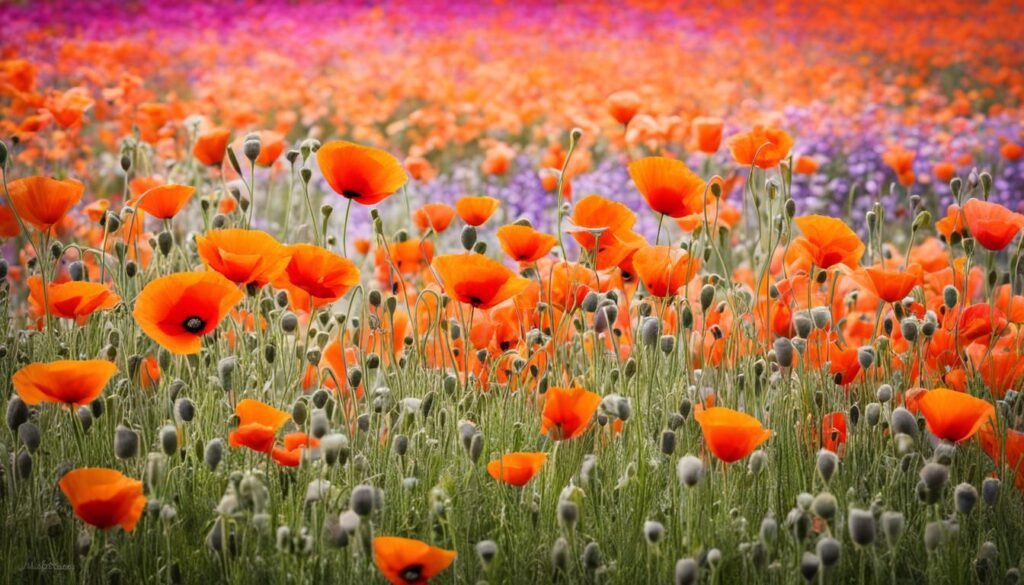
The world of poppies is full of variety and interest. Look through the different types to find what fits your garden best. With the right poppy selection, your garden will be a hit, bringing joy to you and your guests for many seasons.
Best Time to Plant Poppy Seeds
Poppy seeds can be planted in the garden at various times for different blooms. For early spring flowers, plant them between March and May. For blooms in the first growing season, plant between late August and October.
Always check the seed packet for the best planting time for your poppy type. Some, like the Papaver somniferum (opium poppy), need cold-stratification. They do best when sown directly in the garden because their seedlings are sensitive.
Fall to early spring is the best time to plant most poppy types. This lets the seed coat break down slowly. When the weather warms up in mid- to late spring, the seeds will germinate well.
| Poppy Variety | Recommended Planting Time |
|---|---|
| Papaver somniferum (Breadseed Poppy) | Late August to October |
| Papaver rhoeas (Corn Poppy) | March to May |
| Papaver orientale (Oriental Poppy) | September to October |
| Papaver nudicaule (Iceland Poppy) | March to May |
Knowing when to plant different poppy types ensures a beautiful and varied display of flowers all season.
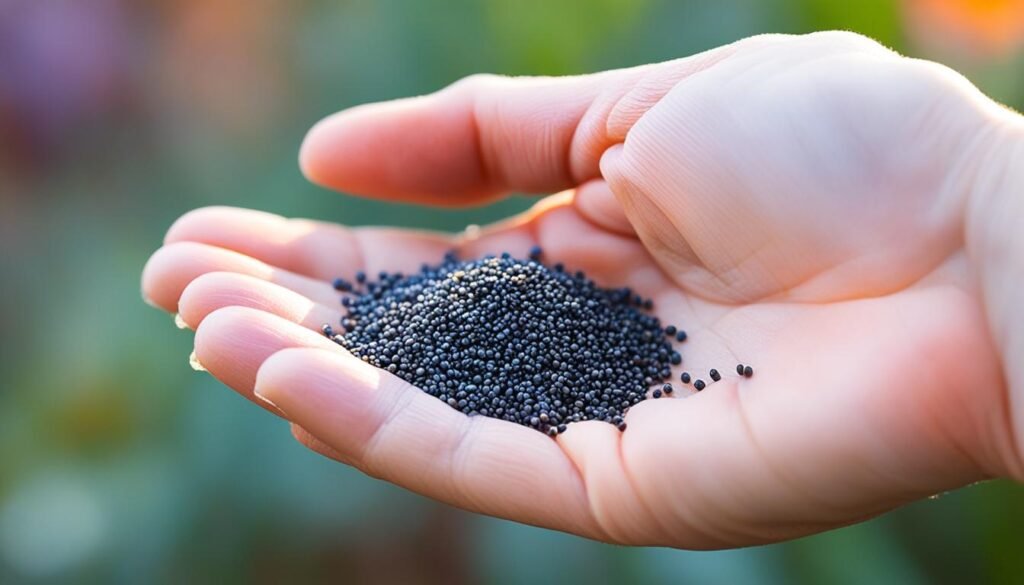
“Poppies are low maintenance, growing well in full to partial sun with no need for extra amendments.”
How to Grow Poppy Seeds
Preparing the Soil and Planting
Cultivating poppy seeds is a fun gardening project that brings color and charm to your garden. Start by picking a spot that gets plenty of sun and has soil that drains well. Use a rake to make the soil smooth.
Then, spread the tiny poppy seeds over the ground thinly. Try to make it look natural. Cover the seeds with about 1/8 inch of soil, but don’t cover them too deeply.
Germination and Thinning
The poppy seed germination takes 7 to 30 days, depending on the type, soil, and weather. Keep the soil moist during this time. When the seedlings are big enough, thin them out to about 12 inches apart.
This lets the poppy plants grow well and look their best.
| Statistic | Value |
|---|---|
| Papaver somniferum height | 40 inches |
| Flower diameter | 1-4 inches |
| Poppy seed cost | $2 per packet |
| Poppy plant height | 5 feet |
| Poppy growth period | Winter growth, spring bloom |
| Seedlings from harvested seeds | Hundreds |
Follow these easy steps to grow a beautiful poppy seed garden. Make sure the seeds germinate well and let the seedlings grow at their pace by thinning them out. With patience and care, you’ll enjoy a stunning poppy display.
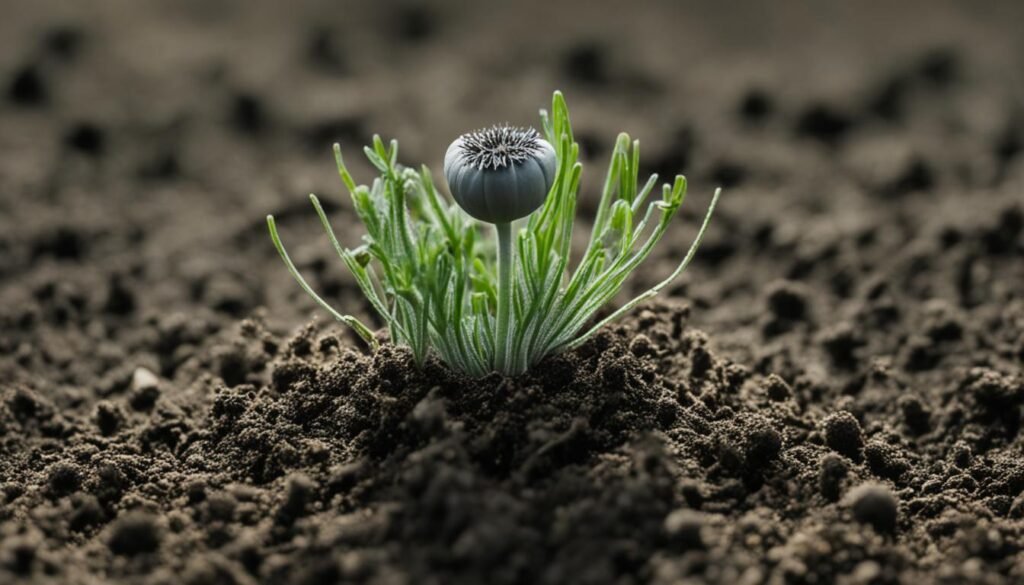
Caring for Poppy Plants
Growing poppy plants is easy but requires some basic care. Focus on watering and mulching to keep them healthy.
Watering and Mulching
Poppies can handle drought but need water during long dry spells. Don’t overwater to avoid diseases. Water your poppies once a week if it’s been dry.
Using a 2-3 inch layer of organic mulch helps keep soil moist and roots cool. Shredded bark, wood chips, or straw are great for poppies.
- Water poppies about once a week during dry periods
- Avoid overwatering to prevent disease
- Apply a 2-3 inch layer of organic mulch around the plants
- Mulching helps retain soil moisture and keep roots cool
Deadheading spent blooms encourages more flowers. With simple care, your poppy plants will flourish and show off beautiful colors all season.
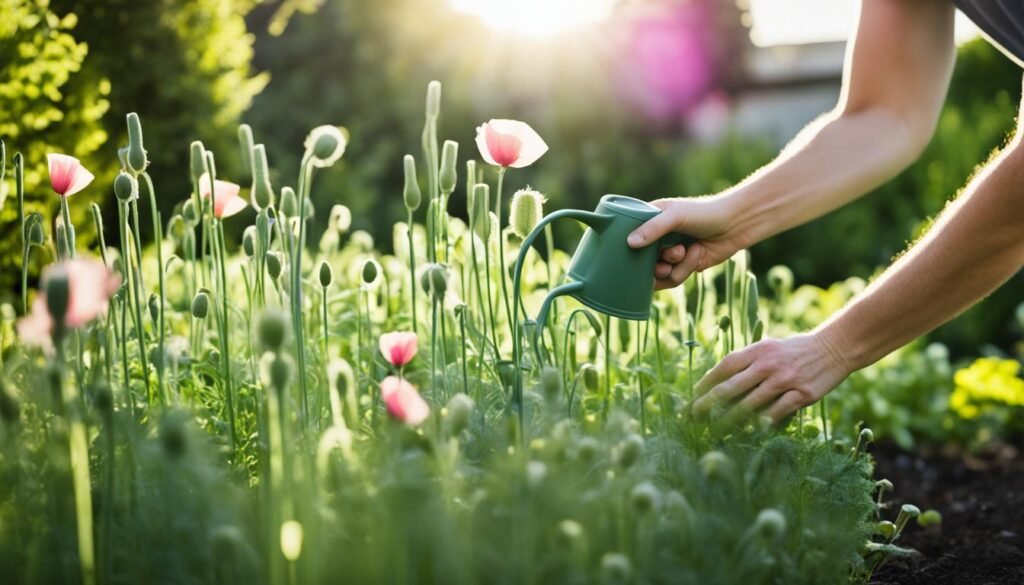
How to grow poppy seeds
Growing poppy seeds is easy and fun. You can grow the famous California poppy or the colorful opium poppy. The steps are simple, from planting the tiny seeds to picking the flowers. Let’s explore the world of growing poppy seeds.
Sowing Poppy Seeds
You can plant poppy seeds directly in your garden or start them indoors in trays or pots. Press the small seeds into the soil, making sure they’re close to the surface. Keep the soil moist until the seeds sprout, which takes about 10-14 days.
- Prepare the soil by loosening and adding organic matter.
- Sprinkle the poppy seeds over the soil and press them in lightly.
- Water the area gently to avoid moving the seeds.
- Keep the soil moist until the seedlings grow and appear.
Thinning and Spacing
When the poppy seedlings are a few inches tall, thin them out. This helps them grow well and get air. Keep the poppies at least 12 inches apart for the best growth.
- Thin the seedlings, keeping the strongest ones.
- Space the poppies at least 12 inches apart.
- Don’t overcrowd to prevent disease and promote healthy growth.
Encouraging Self-Sowing
Poppies are great at spreading on their own, making your garden look beautiful with little work. Let the flower heads dry on the plants after they fade. Then, the seeds will scatter, bringing more poppies next year.
“Poppies are easy to grow and self-sow readily, making them a low-maintenance addition to any garden.”
Growing poppy seeds brings vibrant colors and a gentle beauty to your garden. With these easy steps, you can enjoy poppies every year in your own backyard.
Growing Poppies in Containers
Growing poppies in containers is a great way to enjoy these vibrant flowers, even with limited garden space. They love well-drained soil and need little care, making them perfect for container gardening. Here are some tips for growing poppy seeds and container poppy gardening.
For poppy cultivation in pots, pick a container at least 10 inches deep. This lets the poppy’s taproot grow well. Don’t pack your pots too tightly, as this can reduce blooms. Bigger containers mean more flowers.
Since the soil in containers dries out fast, keep an eye on it. Water your poppies often, especially when it’s hot and dry. Regular watering is key for healthy plants and lots of blooms.
To help your poppies grow, fertilize them every two weeks in their first season. Use a weak liquid fertilizer with more phosphorus to help them bloom and keep roots strong. Natural options like liquid seaweed or fish emulsion work well.
Poppies in containers don’t need to be moved indoors for winter. But, make sure their pots aren’t in standing water or getting washed away by heavy rain. Replace any cracked or broken pots in the spring to keep your plants safe.
With the right soil, containers, and care, you can enjoy poppies in containers all season. Whether you’re experienced or new to gardening, container poppy gardening is rewarding and saves space. It’s a beautiful way to add these stunning flowers to your outdoor area.
Harvesting Poppy Flowers
Poppy flowers are beautiful but don’t last long. To keep their beauty around, harvest them at the right time and in the right way. Here are steps to make sure you get a lot of poppy flowers that last.
Timing the Harvest
Harvest poppy flowers in the early morning. This is when they are fully open and look their best. Don’t cut them in the hot part of the day, as they might wilt and lose their beauty.
Cutting the Blooms
Use sharp, clean scissors or pruners to cut the poppy flowers. Cut the stems at an angle, leaving 6 to 8 inches with the bloom. Then, put the cut stems in a vase with room-temperature water right away to keep them from wilting.
Harvesting Poppy Seed Pods
Wait for the seed pods to turn light brown and dry before harvesting the seeds. Open the pods gently and collect the small, kidney-shaped seeds. Keep the seeds in a cool, dry place for up to two years. Plant them in the fall for a beautiful poppy display the next year.
By following these easy steps, you can enjoy the beauty of poppy flowers for days. You can also save their seeds for planting later. Happy harvesting poppy flowers!
Poppy seeds are not just pretty; they’re also packed with nutrients. They have fiber, omega-6 fatty acids, and important vitamins and minerals. Adding poppy seeds to your diet can help with hair and scalp health and support liver function.
Companion Planting with Poppies
Poppies brighten up any garden and are great companions for other plants. By planting them with flowers and veggies, you create a balanced garden. Let’s dive into poppy companion gardening and see which plants pair well with these lovely flowers.
For poppies, choose plants that like the same conditions. Annual poppies go well with nasturtiums and alyssum. These flowers match the poppies’ colors and draw in bees and butterflies.
For a diverse garden, add perennial poppies like Oriental, Icelandic, and Japanese. Mix them with delphinium, scabious, foxglove, lupines, and columbine. These plants create a soft, cottage-style look.
Poppies are great in vegetable gardens too. They attract pollinators and boost garden health. Borage, Russell lupins, sunflowers, marigolds, sweet peas, and calendula are perfect with poppies. They’re pretty and help pollinators, which means better crops.
Think about what each plant needs when planning your garden. Poppies love full sun and need at least 6 hours of sunlight. Choose plants that like the same light and water to help them grow well together. Irises, peonies, and daylilies are good choices because they grow well with poppies.
Using a mix of companion plants makes your garden lively and healthy. Whether in beds, the veggie garden, or containers, the right plants make your space look and work better.
| Companion Plant | Benefits |
|---|---|
| Nasturtiums | Bright, cheerful flowers that complement poppies and attract pollinators |
| Alyssum | Low-growing, fragrant flowers that thrive alongside poppies |
| Delphinium | Tall, stately flowers that add a touch of elegance to the poppy garden |
| Marigolds | Vibrant orange and yellow blooms that deter pests and improve soil health |
| Borage | Attracts beneficial insects and provides a beautiful contrast to poppies |
Tips for Growing Poppies in Southern California
In Southern California’s warm zones, like USDA Zones 9-10, poppies can bloom vibrantly with the right care. Here are some tips to help your poppies flourish:
- Time your planting right: Plant poppy seeds before the rainy season for early spring flowers. This lets seedlings grow before the summer heat hits.
- Avoid overhead watering: Overhead watering can lead to fungal diseases in poppies. Water at the base instead, keeping the soil moist but not too wet.
- Mulch heavily: Use a thick layer of organic mulch to keep soil moist and cool. Poppies love this in Southern California’s warm climate.
- Deadhead spent blooms: Remove dead flowers to make the plants bloom more throughout the season.
By using these tips for growing poppies in southern california, you can enjoy their vibrant colors. With care, poppies can be a beautiful addition to any garden in poppy cultivation in warm climates. They add natural beauty to outdoor spaces.
“Poppies are a true garden delight, and with the right growing conditions, they can flourish even in the warm, sunny climate of Southern California.”
Remember, growing poppies in Southern California might take patience and some trial. Adjust your approach to fit your garden’s conditions. With these tips, you’re on your way to a stunning poppy cultivation in warm climates that will enhance your poppies for southern gardens.
Conclusion
Poppies add a touch of beauty to any garden with their vibrant colors and easy care. Whether you choose annuals, biennials, or perennials, growing poppy seeds is simple. With the right planting and care, you can enjoy stunning poppy blooms in your garden.
This guide has given you the key tips to grow a thriving poppy garden. It’s important to know what poppies need, like well-draining soil, plenty of sunlight, and regular water. This way, your poppy plants will grow well.
Starting your poppy garden is an exciting journey. Enjoy the process and the beauty these flowers add to your space. With dedication and the knowledge from this guide, you’ll soon have a beautiful poppy display. It will be a sight to behold for everyone who sees it.
FAQ
What are the different types of poppy varieties to choose from?
There are over 120 poppy varieties, including annuals, biennials, and perennials. Popular ones include the Flanders or field poppy and the larger Oriental poppy. You can also find unique Icelandic and Japanese poppies.
When is the best time to plant poppy seeds?
You can plant poppy seeds in spring or autumn. For early spring flowers, plant between March and May. For blooms in the first growing season, plant between late August and October. Always check the seed packet for the best planting time.
How do I prepare the soil and plant poppy seeds?
Pick a sunny spot with well-drained soil. Rake the area to make it fine. Then, spread the tiny poppy seeds thinly over the ground.
Cover them with 1/8 inch of soil. Keep the soil moist until germination, which can take 7-30 days. Thin the seedlings to about 12 inches apart when they get bigger.
How do I care for poppy plants?
Poppies are easy to care for. Water them when they’re dry, but don’t overwater to prevent disease. Mulching helps keep the soil moist and cool.
Remove dead flowers to encourage more blooms.
Can I grow poppies in containers?
Yes, you can grow poppies in containers. Make sure the pot is at least 10 inches deep. Don’t overcrowd the pot to get more flowers.
Big containers give you more blooms. Remember, containers dry out faster than garden beds, so watch the soil closely.
How do I harvest poppy flowers and seeds?
Poppies are great for cut flowers, but they don’t last long. Harvest them early in the morning and put them in a vase with room temperature water.
For poppy seeds, wait until the pods turn light brown and dry. Then, open them and store the seeds for up to two years.
What are some tips for growing poppies in Southern California?
In Zones 9-10 of Southern California, plant poppy seeds before the rains for early spring flowers. Avoid overhead watering to prevent disease. Mulch heavily to keep the soil moist and cool.
Deadheading spent blooms will encourage more flowers.

